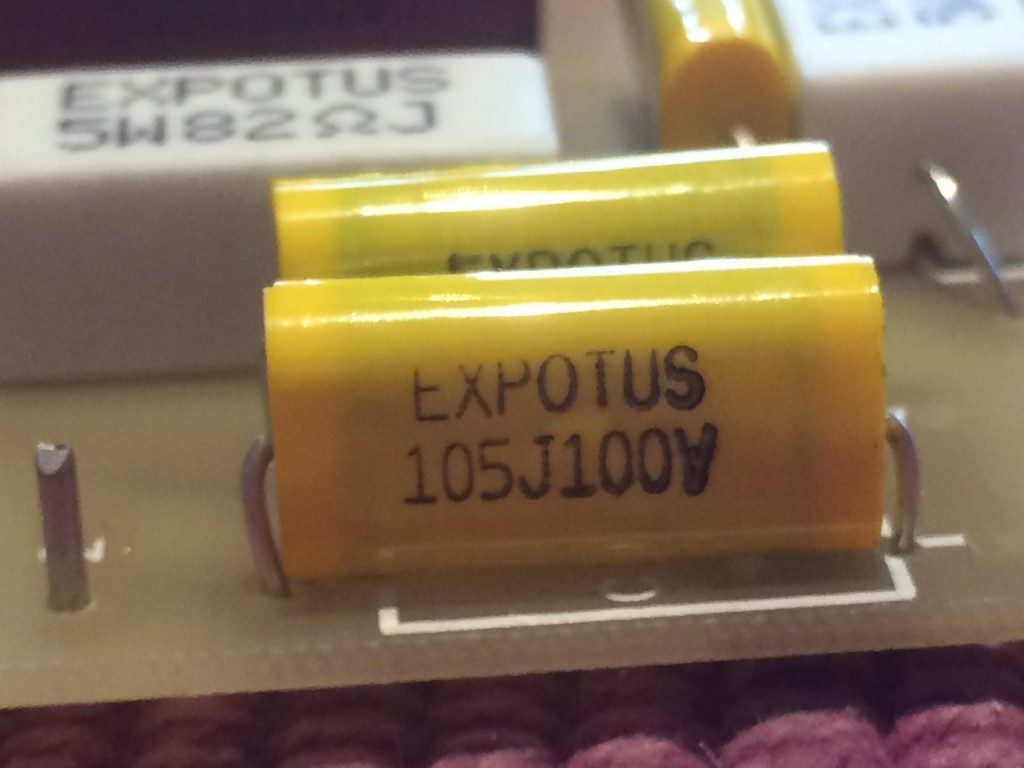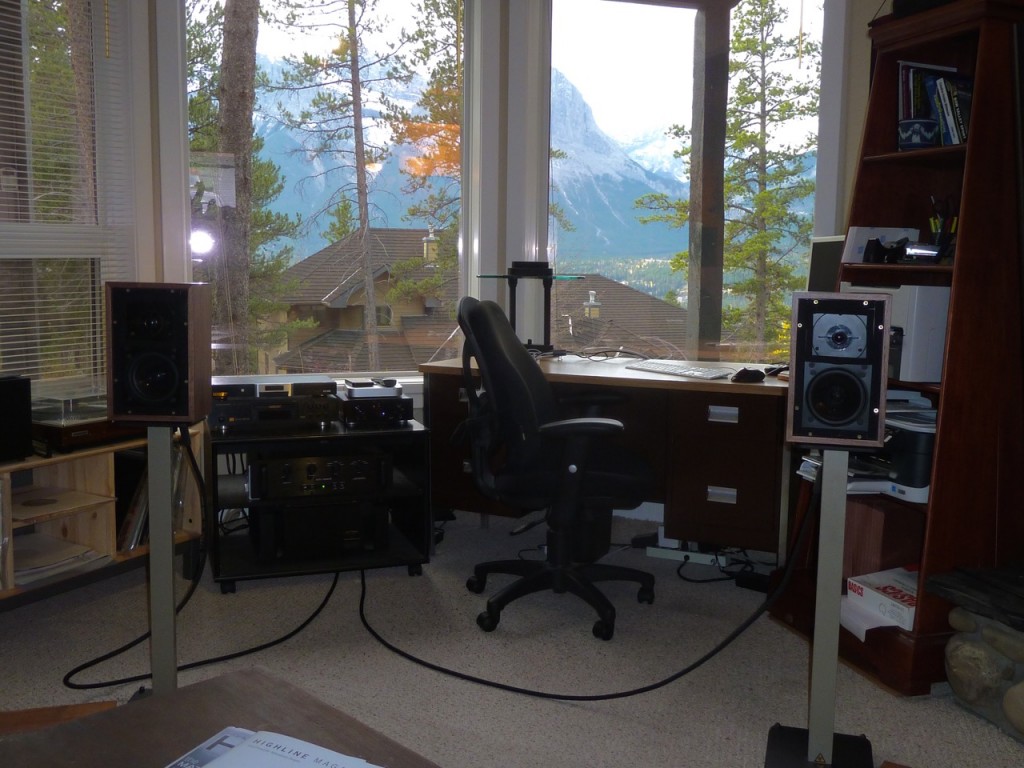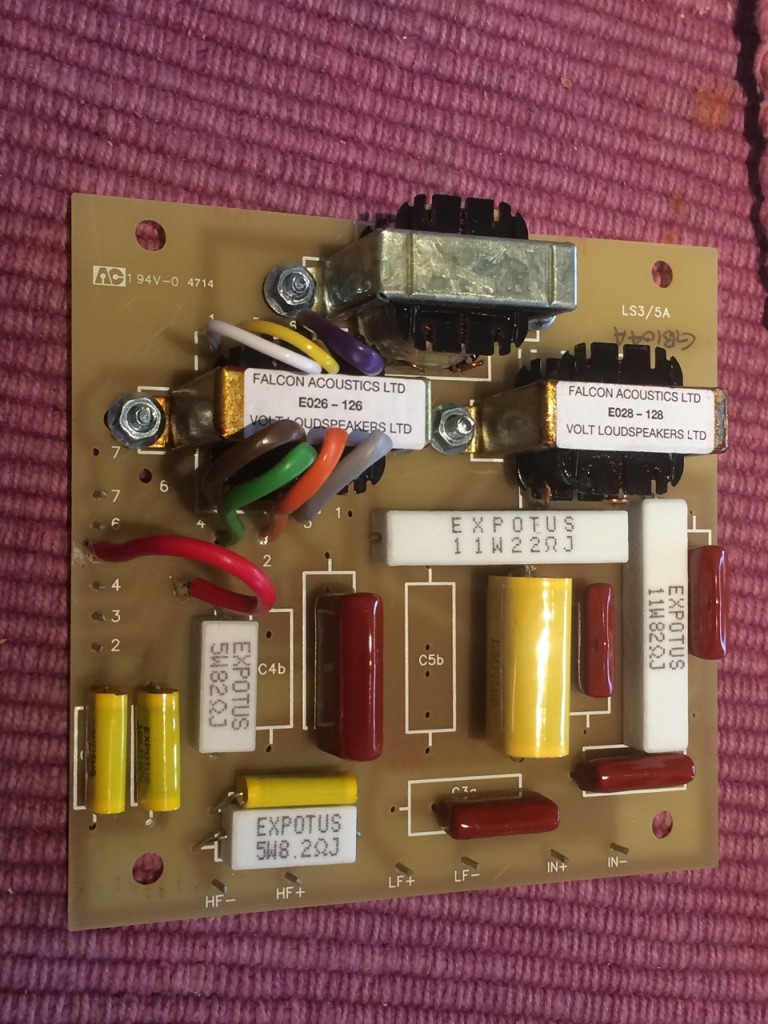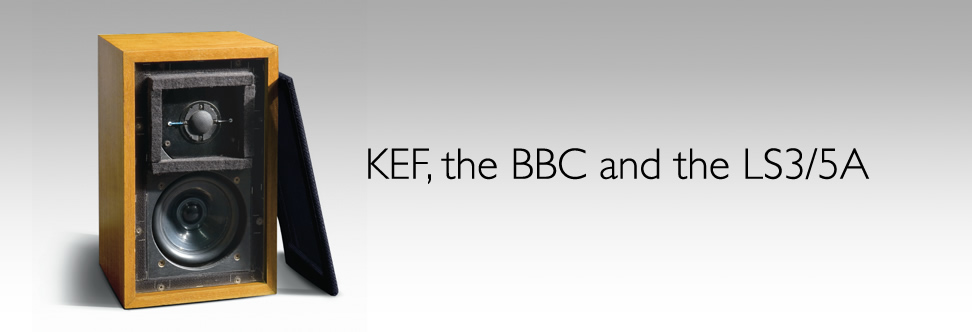I remember like it was yesterday the first time I heard a pair of Rogers LS3/5As, property set up on stands well away from all walls of a well dimensioned listening room. Get in the sweet spot, close your eyes, and you simply won’t believe your ears. Their imaging was so good that you will swear the speakers are far bigger than they are since the soundstage is so expansive. It’s like a magic trick. To this day if they were set up with a curtain hiding them, you could lift that curtain revealing these very small studio monitors to stares of disbelief and dropped jaws. I guarantee it.
I first built a pair of the acoustic suspension design Rogers LS3/5A’s using Kef T-27 and Kef B-110 drivers back in 1978, which is 37 years ago as I write this. I built those speakers for around $150, buying the drivers wholesale, rummaging around for top quality crossover components, and building the cabinets from scratch in a primitive home work-shop. I paid very close attention to the quality of the crossover components, selecting mylar capacitors in matched pairs for tolerances and even had the inductors (coils) hand-wound.

The crossovers were assembled onto a “project” peg board since printed circuit boards for the LS3/5As weren’t available separately until much later. It was an attempt at the time to upgrade and tweak the original design but I dropped the ball on building the cabinets strictly to the BBC’s specifications, an aspect of design that I underestimated at the time. As such the final product ultimately fell short of the original LS3/5As made by Roger’s.
Back in 1978 the LS3/5As retailed for $400 a pair, which was top dollar for a small bookshelf speaker. They are now collectable and I’ve seen them used on eBay from $4k to $6k, depending on their condition, serial numbers, and authenticity. They were widely licensed with several variants subsequently released, the most prominent of which was from Falcon Acoustics.
So pretty early along my path back to high end audio I stumbled upon a pair of Kef T27 tweeters, scavenged from Kef speakers that were nearly 40 years old (An Edmonton audio-venture (names changed to protect the guilty)), grabbed them, and thereby committed to building a pair of LS3/5As again.
I brought those Kef T27s to Maui, thinking I’d build the LS3/5As there with some Kef B110 drivers I planned to scavenge from a salvage pair of Kef 104/2s that had been given to me. When I went to remove those B110s from the cabinet it became immediately obvious there was something very wrong. In fact, the B110’s Kef used in their 104/2s was integrated into the cabinet, rather than bolted onto the baffle. I soon realized that it was impossible to remove the B110s from their integrated and filled cabinet without destroying them, so back to Canada my cherished T27s went.
Nearly a year passed, I found a good deal on a perfect pair of stands for my future LS3/5As, but still all I had were tweeters and stands. Finally I got motivated, purchased a Falcon Acoustics (from England) kit for everything but the T27s, ordered a soldering iron and rosin core solder, and got started. I was further delayed by incorrect parts arriving, reordering… the usual DIY kind of stuff.
Then one day I was staring at everything I needed laid out on my kitchen table and thought, “today is the day, I’m gonna be listening to these tonight.”

There were a few puzzles along the way, per usual, but perseverance prevailed. I checked and double checked everything. The first time I built a pair of these I fried my T27s by not properly stripping the insulation off the inductor wire prior to soldering. I finished one and hooked it up and much to my delight everything seemed (and sounded) in order. So I finished the other one and put them both on the stands I had already purchased and filled with sand for mass loading (sand is plentiful when you live on a golf course… sand traps ;-). Then I tweaked positioning for my sweet spot and played some background music for a few hours to loosen them up.

Then, finally… 37 years after I built my first pair, I got to listen to the famous LS3/5A again. I was afraid nostalgia might have gotten the better of me and my fond memories would be squashed by the “absence makes the heart grow fonder” syndrome. Not so… So not so.
Everything I remembered fondly about these babies came alive when I put on my reference recordings (What is a “reference recording”?). First and foremost, figging unbelievable sound staging, that’s their strongest suit. But soon thereafter I started to hear the subtleties in the high frequencies and the amazingly solid mid bass. These are never gonna defy the laws of physics and produce low bass, but what’s there is so good that it doesn’t feel like you’re missing much. And… did I mention the sound staging?.. They definitely seem to defy the laws of physics in that department.
So my Kef 104/2 reference speakers (The venerable Kef 104/2) share the same B110’s (two per speaker in fact) but in those speakers their duty is regulated to mid frequencies and they perform flawlessly. But the 104/2s have a seemingly inferior T33 (Trust your ears… (not the forums) handling the high frequencies. I have to wonder why Kef would have sold their best T27 tweaters to Rogers for the LS3/5As then subsequently handicapped their own reference speakers with the T33s (the one’s in my 104/2s are now replaced with Vifa’s designed to the same specs)?
Are the T27s really that much better or did the Rogers engineers hit it out of the park with their crossover design?

Or did the BBC engineers somehow play a role in the magic of the LS3/5As?… Or, as is so often the case, it’s not any one of these things but the synchronicity of all of them that culminated in the sublime?
I don’t think these questions have ever been answered, though they have certainly been voiced by audiophiles world wide. That’s how good the LS3/5As are. For my part I not only don’t know but, and this is one of the only times you will hear these three words from this curious audiophile, “I don’t care”. What counts is that I now have a pair sitting on stands in my living room that will share time in Canada with my Maggies, depending on what flavor of greatness I’m in the mood for.

